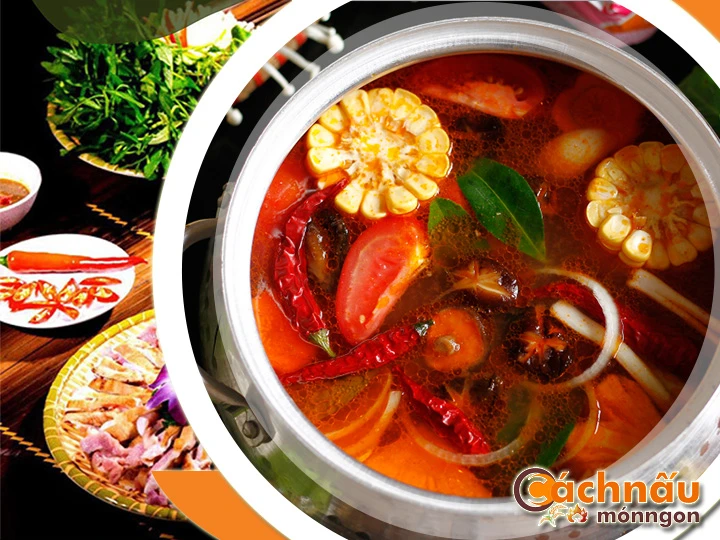Master the Perfect Rabbit Hot Pot Ideas You Must Try - Lẩu thỏ
Master the Perfect Rabbit Hot Pot Ideas You Must Try - Lẩu thỏ
Blog Article
Rabbit hot pot, a tasty and culturally rich dish, has been prized across global culinary styles for centuries.
This comprehensive guide explores the totality you need to learn about rabbit hot pot, from its historical roots to contemporary twists, dietary perks, and methodical instructions for creating the ideal dish at home. Whether you are a seasoned chef or a aspiring chef, this guide will motivate and prepare you to master the art of rabbit hot pot.

DIVING INTO THE CHRONICLES IN ADDITION TO CULTURE FOCUSED ON BUNNY CASSEROLE.
Rabbit hot pot is a special and classic dish with rich cultural roots in many areas. Its demand stems not only from its rich flavor but also from its history and value.
1. Tracing the Evolution concerning Hearty rabbit meal.
- The Origins: Rabbit stew was first made in remote areas where these animals were a popular, sustaining food source. In early Chinese history, it was a traditional treat, particularly during holidays.
- Gaining Popularity: In Western countries like France, rabbit was frequently added to broths, adapting into modern versions of contemporary hot pots as the dish spread across cultures.
2. Rabbit Stew within Eastern Food Traditions.
- China: Known as the traditional rabbit hot pot, rabbit hot pot is a staple of Sichuan-style cooking, admired for its pungent flavors and cherished at family gatherings.
- Throughout Korea and Japan: While relatively rare, rabbit hot pot is sometimes made as a therapeutic meal in the Korean Peninsula, or inspired by Japanese nabemono in Japan, including local plants and herbs.
- Across Vietnam: Although rabbit hot pot is rarely a daily choice, it is well-known during important celebrations or in rural areas where rabbit meat is abundant. It is often made using distinctive spices such as lemongrass, ginger, and fiery chili, paired with fresh vegetables like swamp cabbage, spicy greens, or sensitive plant. This dish is loved for its one-of-a-kind flavor and healthy attributes, frequently relished at social meals.
Trong văn hóa Việt Nam, tuy không phổ biến là món ăn thường dùng từng ngày, nhưng rất quen thuộc trong những ngày quan trọng hoặc ở những vùng nông thôn, nơi thịt thỏ được tìm thấy nhiều. Thường được tẩm ướp với mùi thơm từ sả, gừng, và ớt tươi, kết hợp với rau sống khác. Món ăn này được lòng nhiều người nhờ sự đặc sắc trong hương vị và tính bổ dưỡng, thường các buổi gặp gỡ bạn bè.
3. Braised Bunny Dish in European Gastronomy.
- In France: Often prepared as a warming meal with a red wine base, fresh rosemary and other herbs, and root vegetables. Rabbit hot pot is a beloved meal for festive feasts.
- Throughout Italy: The dish named “Cacciatore”, featuring rabbit braised in tomatoes and wine, is a precursor to hot pot-style rabbit dishes.
HOW TO COOK RABBIT HOT POT: RECIPES AND TECHNIQUES
Rabbit hot pot is a flexible dish that combines natural components, aromatic broths, and specialized methods to create a filling and flavorful experience. Below are detailed insights into the primary methods and thưởng thức lẩu thỏ strategies to master rabbit hot pot.
Basic Recipe for Rabbit Hot Pot
* Required Ingredients:
- 1 whole rabbit (sectioned)
- 4 cups of broth (chicken)
- Vegetables (potatoes)
- Spices and herbs (ginger)
- Seasonings (soy sauce)
- Optional: noodles for serving
* Cooking Instructions:
- Prepare Your Meat: Clean and section the rabbit into pieces. Marinate with salt, pepper, and a splash of soy sauce for 30 minutes to enhance the flavor.
- Create the Broth: Heat a vessel with a touch of oil. Fry minced garlic and ginger until golden. Add your preferred broth and bring it to a light boil.
- Simmer the Rabbit: Add the rabbit pieces into the pot and let them simmer on low heat for 30-40 minutes until cooked through.
- Add Vegetables: Add your selected vegetables and cook until they are perfectly cooked but still bright.
- Present: Transfer the hot pot to a serving dish. Serve with dipping sauces and extras like rice or noodles.
Key Techniques for Cooking Rabbit Hot Pot
- Flavor Enhancement:
. Marinate the rabbit with a blend of salt, pepper, and aromatics to amplify its natural flavor.
. For more richness, use wine, soy sauce, or a mix of fresh herbs like rosemary and thyme.
- Adding Ingredients Strategically:
. Start by boiling the rabbit in the broth to release its essence.
. Layer vegetables strategically based on their texture needs.
- Cooking Time:
. Avoid cooking too long the rabbit, as it can lose tenderness.
. Test for doneness by checking if the meat is fork-tender.
- Taste Customization:
. Fine-tune the broth by adding additional seasonings as needed.
. Experiment with different flavor profiles, such as creamy European-inspired variations.
Tips for Success
- Choose Freshness: Always choose high-quality rabbit and in-season greens for the top flavor.
- Achieve Harmony: Be aware of the spiciness in the broth. Taste and adjust frequently during cooking.
- Creative Accompaniments: Offer a range of sauces like garlic-chili oil or savory soy mixes to enhance the dining experience.
- Presentation: Use a portable stove or serve the hot pot at the center of the table to foster interaction.
By mastering these methods and recipes, you can create a rabbit hot pot that’s delicious and attractive, turning it into a star attraction for any dining experience or event. Report this page